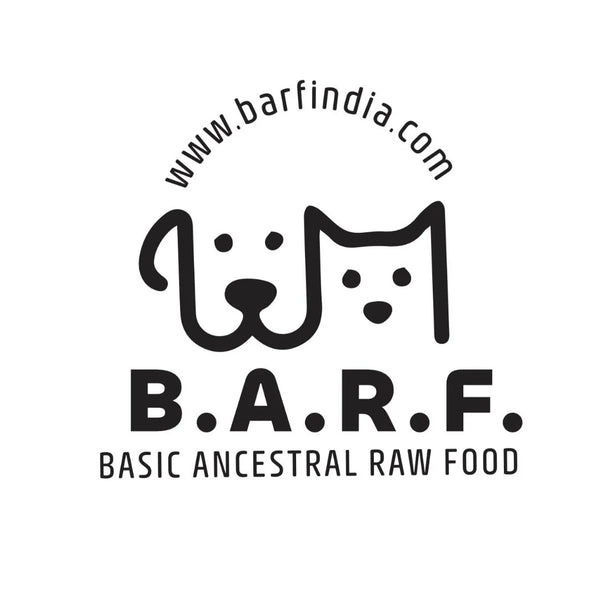Raw diet for dogs: everything you wish to know, in a nutshell
There is a lot of debate overfeeding your dog a raw food diet. There is one school of thought that believes dogs were eating raw before they met us, while there is another that thinks dry dog food is the best option for them.
Let’s talk a little more about raw food diets for dogs so you can make a more informed decision.
So, what is a raw food diet for dogs?
Quite simply put, a raw food diet for dogs is primarily uncooked meat and includes muscle and organs, whole or crushed bones, vegetables, fruits, raw eggs, and at times, dairy.
The origin of raw diets can be traced back to 1993 when Australian veterinarian Ian Billinghurst suggested feeding the home pet the same diet as racing greyhounds and sled dogs. He branded it as the ‘BARF’ for dogs, which means ‘Bones and Raw Food’ or ‘Biologically Appropriate Raw Food’.
Billinghurst’s support for the BARF dog food was that this is how dogs ate before they got domesticated. Moreover, his argument was that commercial pet foods were harmful for dogs because of the chemicals and artificial ingredients they contained.
What benefits can the raw food diet for dogs claim?
Billinghurst believed (and his supporters say so too!) that feeding your dog a raw food diet gives them:
- Shinier coat
- Healthier skin
- Cleaner teeth
- More energy
- Smaller stool
However, many vets and the dog food industry dismiss these claims, stating the following risks:
- Bacteria in raw meat can be dangerous for the dog’s and human’s health
- Dogs who are given whole bones risk choking, broken teeth or internal punctures
Making the transition from dry food to raw
If like us, you believe that the benefits far outweigh the risks, and you decide to adopt the raw diet, you must transition your dog to a new diet slowly and gradually. Follow this schedule while making this shift.
-
Day 1: Feed 75% of current food and add 25% of the raw food in each meal
-
Day 2: Feed 60% of old food and add 40% of the raw food.
-
Day 3: Feed 50% of old food and mix 50% of the raw food.
-
Day 4: Feed 40% of old food mixed with 60% of the raw food.
-
Day 5: Feed 25% of old food and mix 75% of the raw food.
-
Day 6: Feed 90-100% of the raw food, with just a little of the old food.
Split the daily serving into two meals, one for the morning and one for the evening. If your dog doesn’t take to a certain day’s proportions, go back to the previous day’s plan and proceed at a slower pace, sticking to a serving plan for 2-3 days before moving on to the next.
Raw dog food recipes
Where does one get raw food from? If you wish to get your dog started on raw, but want to try it first, here’s a recipe you can use. Talk to your vet about your dog’s nutritional requirement, since this varies from breed to breed, and the size of your dog matters too. Alternatively, you can give your dog the perfectly balanced pre-made raw meal from
BARF India.

Ingredients
- 1½ kgs. ground beef
- 4 pounds chicken livers
- 1 carrot, chopped
- 1 small apple, cored
- 1/2 cup baby spinach
- 2 whole eggs (including shell)
- 1/2 cup plain yogurt
- 1 tbsp ground flaxseed
- 1 tbsp olive oil
Directions
- Put the carrot, apple, and spinach in a food processor and chop finely or puree the same.
- Add all other ingredients except beef and process again until well combined.
- Transfer this mix to a large bowl and add the beef, mixing it all thoroughly.
- Make patties about the size of your palm and place them on a baking sheet.
- Freeze the patties and then transfer them to a container in the freezer.
- Remove one patty (or more depending on how much you need to feed your dog) the night before and place it in the refrigerator to thaw.
Make sure that you use only high-quality grade meat. Clean all surfaces and utensils that have come in contact with the uncooked meat thoroughly.
Conclusion: every pup is unique
Check with your vet before making a transition. Every pup is different, and just because your furry friend gobbles up the raw food, it doesn’t mean that it’s got the right balance. If there is an underlying health issue, factor that in before making the change. Be patient during the process, and remember that any diet change can lead to some stomach issues.
Are you considering a raw diet for your pup? Do let us know in the comments your reasons for making the shift and what your experience has been ever since.


